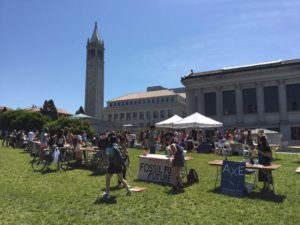The Member Spotlight celebrates our members who work tirelessly to advance sustainability at their campuses and in their surrounding communities.

“To paraphrase UC President Janet Napolitano, since research universities are in the business of making breakthroughs, if we can’t figure out how to be carbon neutral, how is anyone going to?” Mr. St.Clair shared. He said that institutions who want to be sustainability leaders need to build on their existing strengths. “The University of California is too big to take some of the sustainability actions that smaller colleges can, but because of our large size we are able to do things like form our own electric utility company to allow us to quickly transition to 100 percent clean energy.” UC’s electric utility procured the largest solar power project of any university in the country–80 megawatts of solar photovoltaic panels in central California–and plans to provide 100 percent clean electricity to participating UC campuses in 2018. He recommends when evaluating your institution’s strengths, you think about the surrounding communities and the impact you can you have. For instance, a smaller institution may have more of a direct and immediate impact on supporting smaller local farmers or other small businesses, while larger institutions can impact larger supply chains.
 He went on to talk about how sustainability can mean a lot of different things to a lot of different people, but that through the Sustainability Tracking, Assessment & Rating System (STARS), the higher education community was able to create a common understanding along with benchmarks that institutions can use to create goals for future improvements.
He went on to talk about how sustainability can mean a lot of different things to a lot of different people, but that through the Sustainability Tracking, Assessment & Rating System (STARS), the higher education community was able to create a common understanding along with benchmarks that institutions can use to create goals for future improvements.
It is Mr. St.Clair’s drive to solve sustainability challenges at an institution that manages one of the largest system of hospitals in the country that led him to serve on the AASHE Board of Directors for six years. Prior to that, he studied economics and environmental studies at Swarthmore College and was a student activist as a graduate student at UC Berkeley. He was one of the leaders of the UC Go Solar student campaign while a Berkeley grad student, a campaign that succeeded in convincing the UC Board of Regents to adopt the Sustainable Practices Policy that Mr. St.Clair was then hired to implement and expand.
What strengths can your institution draw on to initiate “breakthroughs” on campus and in surrounding communities? How is sustainability represented in your institution’s goals and policies? Comment below!